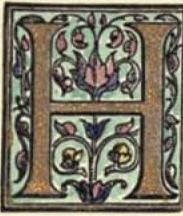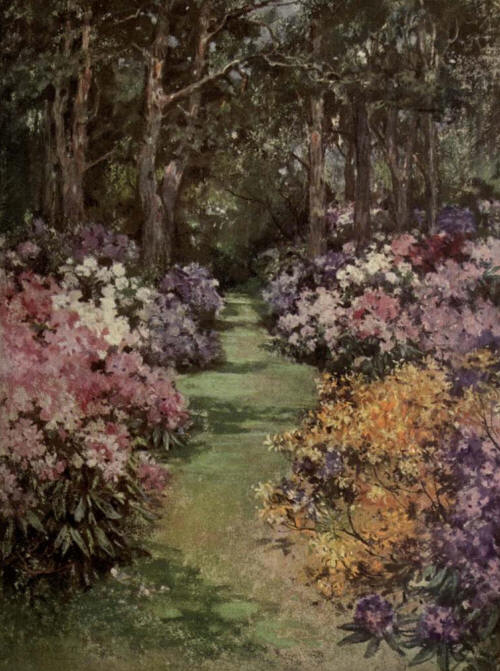|
 E'S
awa to Birgham to buy bickers" is an ancient Border equivoque—how
ancient, no man may say. It seems to date from the memorable treaty
concluded at Birgham-on-Tweed on 18th July, 1290, defining the relations
that should subsist between the realms of England and Scotland after the
marriage of the Maid of Norway—Margaret Queen of Scots—to Edward of
Carnarvon, Prince of Wales. Death snatched the Maid on her way to the
wedding, and there followed three hundred years of "bickers" and
butchery between two nations of the same race, speech and creed, the
most purposeless and wasteful war that ever drained the resources of a
civilised people. E'S
awa to Birgham to buy bickers" is an ancient Border equivoque—how
ancient, no man may say. It seems to date from the memorable treaty
concluded at Birgham-on-Tweed on 18th July, 1290, defining the relations
that should subsist between the realms of England and Scotland after the
marriage of the Maid of Norway—Margaret Queen of Scots—to Edward of
Carnarvon, Prince of Wales. Death snatched the Maid on her way to the
wedding, and there followed three hundred years of "bickers" and
butchery between two nations of the same race, speech and creed, the
most purposeless and wasteful war that ever drained the resources of a
civilised people.
Little enough does
Birgham now bear the aspect of a source of strife. Perhaps the old
saying was coined in irony because of the inadequacy of this hamlet to
sustain a name so great in history, for "bicker" means a wooden bowl as
well as a battle. Half a score of grey roofs scattered along a green

ridge are all that mark
the birthplace of the War of Independence. Although no part of British
soil has been so often soaked with good blood than this vale between
Birgham and Coldstream, for the Tweed becomes from Birgham downwards the
frontier dividing the two realms, yet nowhere have the traces of
conflict been more completely effaced by a veil of verdure and flowers
than in Lord Home's pleasant demesne of the Hirsel.
"Poor heart!
above thy field of sorrow sighing
For broken faith and love untimely slain,
Leave thou the soil wherein thy dead are lying
To the soft sunlight and the cleansing rain.
Love works in silence, hiding all the traces
Of bitter conflict on the trampled sod,
And time shall show thee all earth's battle-places
Veiled by the hand of God."
The very name—The Hirsel—signifying
a sheep-fold, breathes pastoral tranquillity, the very antithesis of
Lord Home's other residences, to wit
"The aventurous castell of
Douglass,
That to kep sa peralous was" -
a place of such wrathful
memories that Sir Walter Scott chose it for the scene of his gloomy
romance, Castle Dangerous; and Bothwell Castle on the Clyde, where the
Earls of Hereford and Angus and a few of King Edward's most famous
knights sought refuge from the fatal field of Bannockburn, for it was
almost the only Scottish fortress where the English flag still flew.
Outwardly there is
nothing in the aspect of the Hirsel to revive memories of the old riding
days any more than its present owner, twelfth Earl and seventeenth Lord
of Home, could be supposed capable of restoring "Jethart justice," the
practice instituted by his ancestor in 1606, when a number of
freebooters were first hanged, and then put upon their trial. The
mansion is just a country gentleman's roomy residence, built on the
banks of the troutful little Leet, and comfortably screened with ample
woodland. To view it at its fairest you should go there when May is
melting into June, when the trees have just donned their summer finery,
and golden broom and fragrant hawthorn turn every country lane into a
chemin de Paradis.
There is great wealth of
rhododendrons in the Hirsel woods, not only the common—far too
commonponticwm, but the finer hybrid varieties, which are not crowded
together in clumps, as one too often sees them arranged, but planted in
large measure and with liberal space in the glades of old Scots pine and
birch. It is in chequered sunshine and shade that these princely shrubs
attain their highest development. Planted in the open, the blossoms get
seared by summer heat; but in thin woodland they display and retain the
purest hues.
Eighty years ago Loudon
took note of a fine tulip tree growing in the Hirsel garden, reputed at
that time to be one hundred years old, and measuring twenty feet in
girth at three feet above ground level. The tree is still there, but it
is far gone in decay, though it still puts forth plenty of healthy
foliage and flowers regularly.
The tulip tree is seldom
seen in Scotland; more's the pity, for it is perfectly hardy, its growth
is stately and its foliage exquisite. Moreover, the timber is of fine
quality, of a clear, light yellow colour, much in request in the United
States. Probably the infrequency of its appearance in British woodlands
is owing to the difficulty of nursery treatment, owing to the soft and
brittle nature of the roots. Also, it requires careful pruning when
young to keep it shapely, for it will not stand the removal of large
branches in later years. Lastly, the tulip tree must be grown in
sheltered spots, for the boughs are very easily broken by high winds. |

